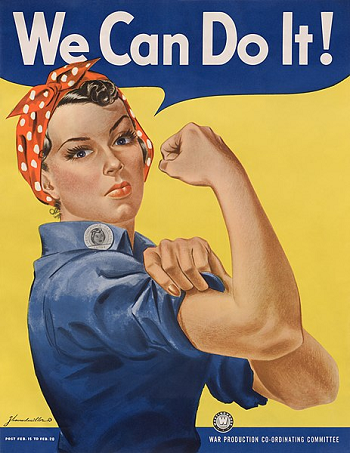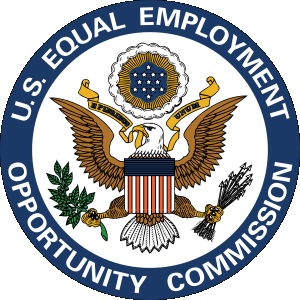
LHR136Y: Race, Gender, and Employment
Lesson 02
L02 Overview
This lesson provides an overview of major societal changes, with an emphasis on employment laws, that protect workers against discrimination in the United States.
Learning Objectives
After completing this lesson successfully, you will be able to:
- Explain how certain major societal changes have affected the employment relationship in the U.S.
- Discuss the most influential employment legislation in the U.S. and how it is enforced at the federal level.
- Describe how employment for women and underrepresented minorities has changed during the first 50 years of the Equal Employment Opportunity Commission (EEOC).
Readings and Resources
For this lesson, read/view the following:
- Lesson 02 content
- Myrtle Bell, Diversity in Organizations (5thed., 2025), Chapter 3: Legislation
- Equal Employment Opportunity Commission, American Experiences Versus American Expectations
Assignments
For this lesson, complete the following:
- Lesson 02 Short Essay on Changes in Employment Participation by Women and Minorities
L02 Terms to Know
The following is a list of terms, found on these pages and the assigned readings, with which you should be familiar by the end of this lesson:
- Adverse impact
- Blue-collar jobs
- Clerical jobs
- Constructive discharge
- Disparate impact
- Disparate treatment
- EEOC (Equal Employment Opportunity Commission)
- Employment relationship
- Gender role socialization
- Glass ceiling
- Harassment
- Hostile environment harassment
- PHRC (Pennsylvania Human Relations Commission)
- Punitive damages
- Quid pro quo harassment
- Racial or ethnic harassment
- Sexual harassment
- URM (underrepresented minorities)
L02 Societal Changes Affecting Employment in the US – World War II
You may be familiar with the image to the right, known as “Rosie

Do It! NARA 535413 - Restoration 2, public domain
the Riveter.” Commissioned by the Westinghouse Electric Corporation, J. Howard Miller created what is now considered “one of the most famous icons of World War II”. The story behind this image is that while “the boys” were fighting the war in Europe, Asia, or elsewhere, women were encouraged to work in defense and other traditionally male-dominated industries and occupations in the United States.
Once the war ended, many women went back to the traditional role of homemaker, but others remained employed, particularly in blue-collar jobs (those that require protective clothing, as opposed to “white-collar jobs” which would normally take place in office settings). Later, many women took clerical jobs (those typically handled by a clerk, such as secretaries, receptionists, etc.) instead of blue-collar ones. This may be due to higher education levels brought about once the war ended, though these effects varied, based on how much mobilization occurred in each state (Bellou and Cardia, 2016).
This was a large war mobilization that took place from 1939-1945, where more than 12 million military personnel were deployed during the war, of which less than 359 thousand were women, according to the National WWII Museum. As a result, World War II was a historical event that opened job opportunities not just for women, but for African Americans and similarly underrepresented minorities (URMs, which include Native Americans and Hispanics) as well.
Coordinated actions by Black leaders A. Philip Randolph and Walter White were a contributing force to the enactment of Executive Order 8802 in 1941 (Bracey and Meier, 1991).
This order compelled equal employment opportunities for all U.S. citizens, irrespective of their race, creed, color, or national origin. The result of this order particularly affected defense contractors, which, at the time, had selection and recruitment preferences that resulted in racial segregation and discrimination against workers of color. This Executive Order is also considered an ancestor of the Civil Rights Act.
L02 Societal Changes Affecting Employment in the US – The 1960s
Now, the fact that women and URMs had more access to jobs in the 1940s did not automatically grant them equality in pay, benefits, or other forms of employment compensation. In 1963, when the Equal Pay Act became law, it is estimated that women earned “about 59 cents to the dollar that men earned” (Bell, 2025). As you may recall, this and several other salary gaps were discussed in Lesson 01.
In 1964, the following year, the Civil Rights Act was signed into law. The act covers a wide array of topics, but the portion known as Title VII specifically prohibited discrimination in employment on the basis of race, color, religion, sex, or national origin. The 1960s also were the decade in which fertility rates decreased strongly, as a result of contraception becoming widely used (Engelhardt, Kögel & Przkawetz, 2004).
Social norms, the availability of hormonal contraceptives, financial incentives, and employment legislation promoted employment of women at levels that had not been experienced before. Social acceptance of women at the workplace, combined with the ability to control reproduction, made it much easier for women and their families to have dual incomes, a financial incentive that few were able to resist—or were interested in rejecting.
The following page looks at societal change affecting employment through the lens of generations.
L02 Societal Changes Affecting Employment in the US – Generational Gaps
Another important demographic change that impacted the employment relationship (the relationship between employers and employees) in the second half of the 20th century is the entry and development of fairly recognizable worker cohorts, or generations. These cohorts include:
- Baby Boomers (those born after 1945, once World War II ended)
- Generation X (those born after 1965, around the times that Civil Rights legislation was enacted)
- Generation Y (those born in the mid-1980s, when many corporations became unable to sustain the expectation of lifetime employment and downsized their workforces in large numbers)
A few in the “millennial generation” w ere born at the end of the 1990s, but they would not enter the workforce until the 2010s and later.
ere born at the end of the 1990s, but they would not enter the workforce until the 2010s and later.
Studies on these cohorts often highlight differences on a variety of attitudes and preferences. For example, many Baby Boomers had an expectation to work for a single employer who would provide a pension upon retirement. On the other hand, Generation Xers, who saw many corporate mergers and acquisitions that included layoffs in the last two decades of the 20th Century, tend to be more likely to switch employers many times in their careers.
Studies also show that, compared to age, life events (e.g., graduating from college, getting married, having children of certain ages, etc.) are stronger determinants of such attitudes and preferences. The Pew Research Center has carried out research for many years on this and other interesting topics
As mentioned earlier, employment legislation has profound effects on employment practices, including hiring, performance management, compensation, and all other work-related processes. Next, we will look at how this legislation is enforced.
L02 Employment Legislation
You will review the most important pieces of legislation at the federal level in this lesson’s textbook reading assignment. The Civil Rights Act of 1964 is likely the most significant of them, but we also have the Age Discrimination in Employment Act (also known as ADEA) of 1967, the Pregnancy Discrimination Act (PDA) of 1978, the Americans with Disabilities Act (ADA) of 1990 as well as its “upgrade,” the ADA Amendments Act (ADAAA) of 2008, the Genetic Information Nondiscrimination Act (GINA) of 2008, and a number of court decisions that have modified their application.
L02 Employment Legislation Enforcement - Federal
The role of the Equal Employment Opportunity Commission (EEOC), logo shown to the right), the enforcement agency at the federal level, is also described with some detail. At the time it was founded, the EEOC only had responsibility for investigating claims of employment discrimination based on race, color, religion, sex, or national origin. Nowadays, its obligations also include discrimination based on age (for individuals 40 or older), pregnancy and disability status, gender identity, sexual orientation, and even genetic information.

Employment Opportunity Commission, public domain
Discrimination may occur at many points in the employment relationship, including hiring, training, promotions, compensation, benefits, and firing. Generally, an employee has 180 days to file a complaint if they believe they have been discriminated against.
L02 Employment Legislation Enforcement - State and Local

Used with permission from PHRC
Many states, including Pennsylvania, have a state-level agency that may receive discrimination complaints at the same time as the federal-level EEOC. In Pennsylvania, it is called the Pennsylvania Human Relations Commission (PHRC, logo shown to the right). When a complaint is filed at the state or local level, the time limit to file is increased to 300 days.
Normally, state or city ordinances offer increased protection against discrimination in employment (as well as other areas, such as housing or education opportunities). For example, in Pennsylvania, the PHRC covers employers that have 4 or more employees, unlike federal legislation that applies only to organizations with 15 or more employees. Other categories of discrimination that are included in the PHRC (state level), but not by the EEOC (at the federal level), include possession of a GED diploma, or participation or refusal to participate in abortion or sterilization.
Across the country, states and cities may offer protection for other characteristics or organizational sizes that are not included at the federal level. You are encouraged to discover the protections offered at your state and local level.
L02 Summary
In this second lesson of our course, we have reviewed some of the most important demographic changes that affected the employment relationship in the United States after World War II. Most of those changes were reflected in and promoted by employment legislation at the federal level (Bell, 2025). The Equal Employment Opportunity Commission (EEOC) is the federal agency that is in charge of investigating discrimination that violates federal legislation.
This lesson’s assignment is intended to help us understand that, while there has been progress in our society in the past five decades or more, there still remains much to be achieved.